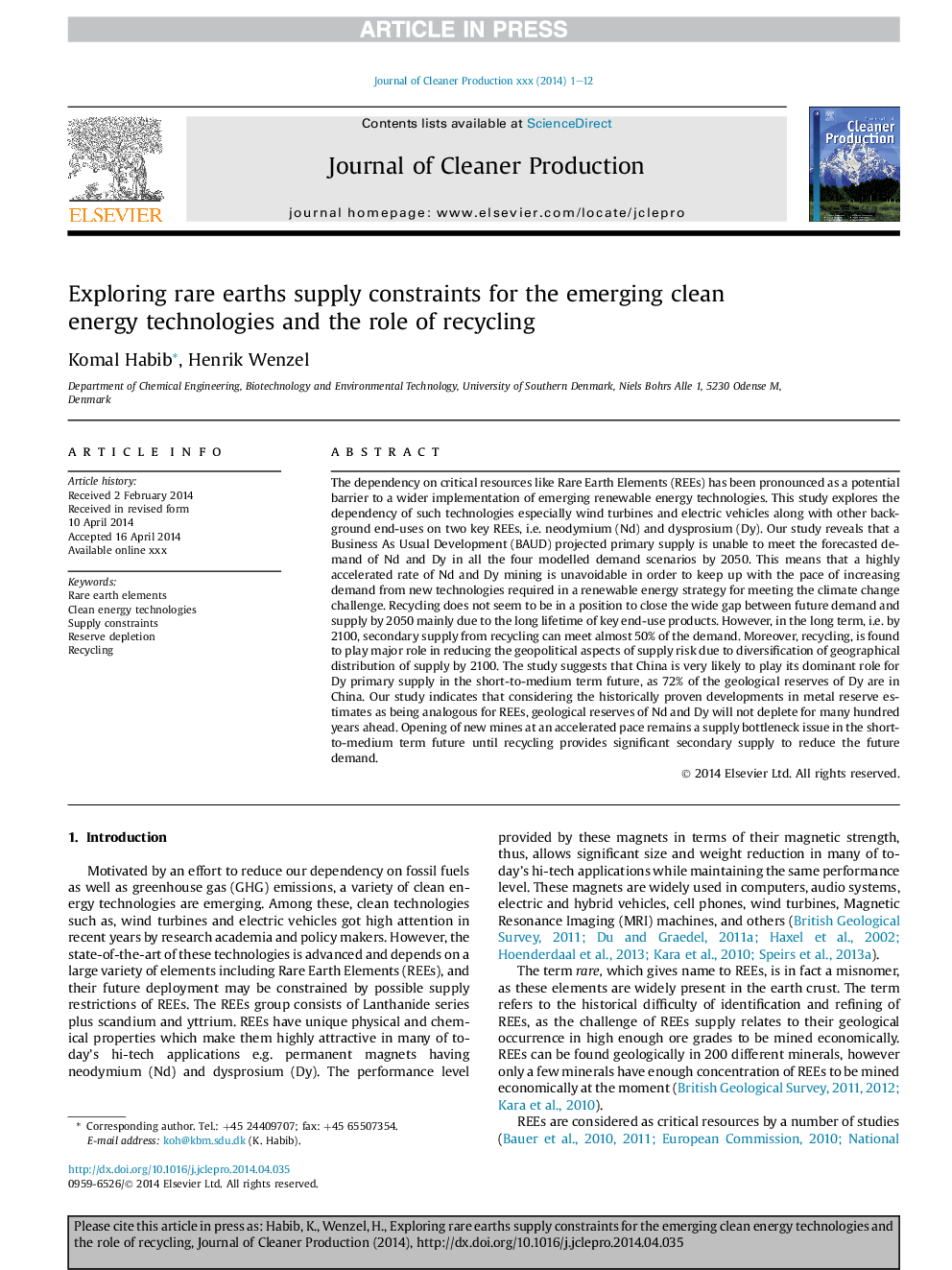| Article ID | Journal | Published Year | Pages | File Type |
|---|---|---|---|---|
| 8105553 | Journal of Cleaner Production | 2014 | 12 Pages |
Abstract
The dependency on critical resources like Rare Earth Elements (REEs) has been pronounced as a potential barrier to a wider implementation of emerging renewable energy technologies. This study explores the dependency of such technologies especially wind turbines and electric vehicles along with other background end-uses on two key REEs, i.e. neodymium (Nd) and dysprosium (Dy). Our study reveals that a Business As Usual Development (BAUD) projected primary supply is unable to meet the forecasted demand of Nd and Dy in all the four modelled demand scenarios by 2050. This means that a highly accelerated rate of Nd and Dy mining is unavoidable in order to keep up with the pace of increasing demand from new technologies required in a renewable energy strategy for meeting the climate change challenge. Recycling does not seem to be in a position to close the wide gap between future demand and supply by 2050 mainly due to the long lifetime of key end-use products. However, in the long term, i.e. by 2100, secondary supply from recycling can meet almost 50% of the demand. Moreover, recycling, is found to play major role in reducing the geopolitical aspects of supply risk due to diversification of geographical distribution of supply by 2100. The study suggests that China is very likely to play its dominant role for Dy primary supply in the short-to-medium term future, as 72% of the geological reserves of Dy are in China. Our study indicates that considering the historically proven developments in metal reserve estimates as being analogous for REEs, geological reserves of Nd and Dy will not deplete for many hundred years ahead. Opening of new mines at an accelerated pace remains a supply bottleneck issue in the short-to-medium term future until recycling provides significant secondary supply to reduce the future demand.
Related Topics
Physical Sciences and Engineering
Energy
Renewable Energy, Sustainability and the Environment
Authors
Komal Habib, Henrik Wenzel,
